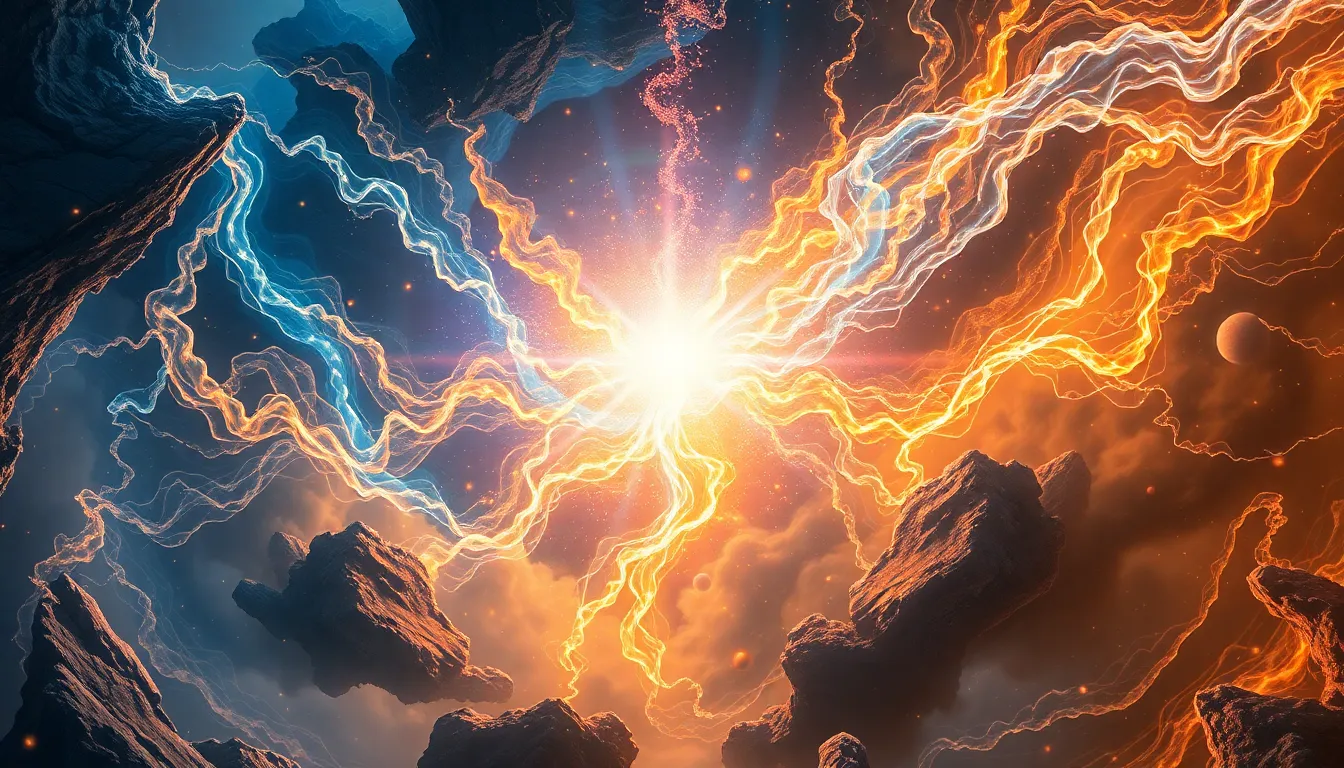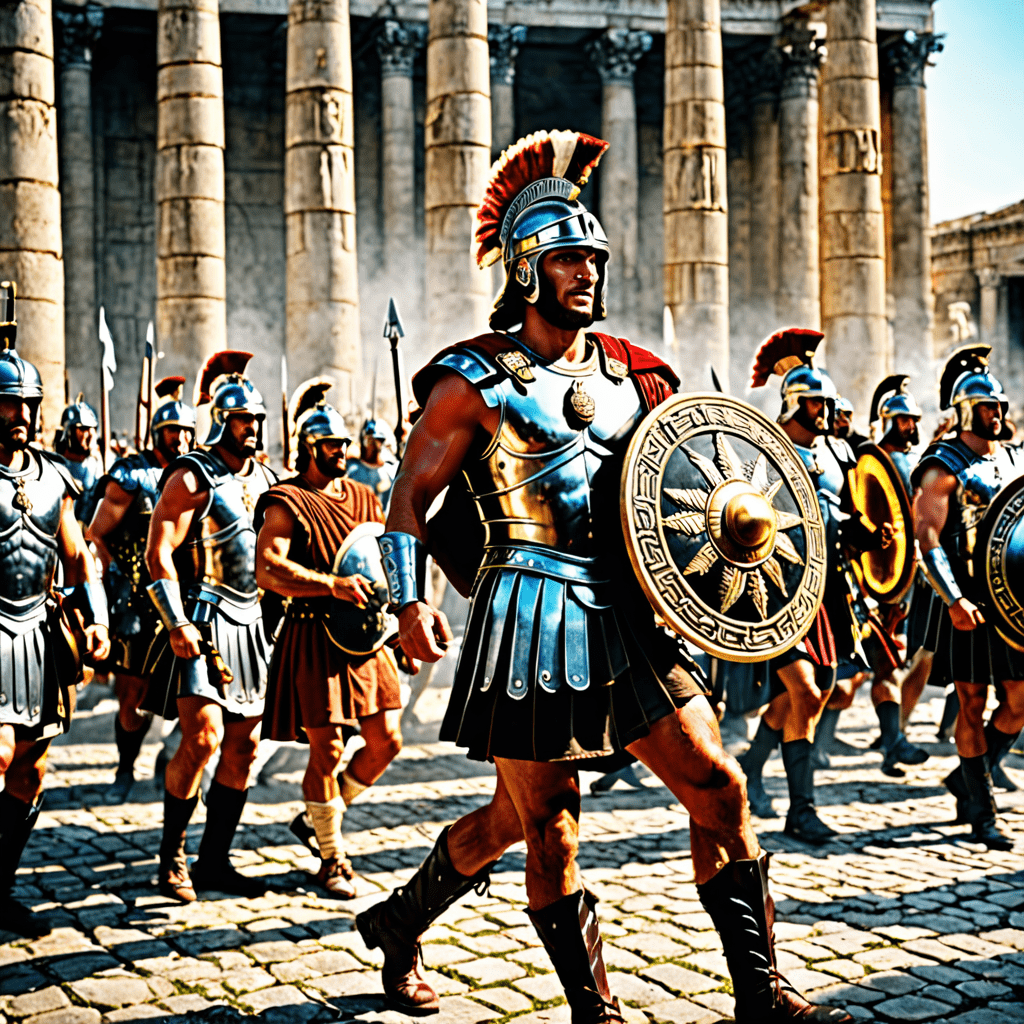The Divine Spark: How Creation Myths Inspire Innovation
1. Introduction: The Intersection of Myth and Modernity
Creation myths are narratives that explain the origins of the world, humanity, and various aspects of life and nature. These stories have played a crucial role in shaping cultures and societies throughout history. They are not merely relics of the past; rather, they continue to influence modern thought and creativity. In today’s fast-paced world, innovation can be viewed as a modern form of ‘creation,’ where new ideas and technologies emerge from the fertile ground of imagination and inspiration drawn from ancient narratives.
2. Understanding Creation Myths: A Historical Perspective
Across the globe, creation myths vary significantly, yet many share common themes and motifs. These include:
- The emergence of the universe from chaos or nothingness.
- The involvement of deities or supernatural forces.
- The creation of humanity and the establishment of order in the world.
For example, in the Judeo-Christian tradition, the Book of Genesis describes God creating the world in six days, while in Hindu mythology, the universe undergoes cycles of creation and destruction led by deities like Brahma, Vishnu, and Shiva. These myths not only provide an explanation for existence but also serve to instill societal values and beliefs, guiding individuals in their understanding of their place in the world.
3. The Psychological Impact of Creation Myths
Psychologist Carl Jung proposed the concept of archetypes and the collective unconscious, suggesting that certain symbols and themes recur across different cultures and eras. Creation myths resonate deeply with human emotions and experiences, providing a framework within which individuals can understand their own lives. Myths serve as powerful storytelling tools that foster creativity and innovation by:
- Evoking emotional responses that inspire new ideas.
- Encouraging individuals to see beyond the ordinary and explore the unknown.
- Creating a shared narrative that can unify people around common goals.
4. Creation Myths as Catalysts for Innovation
Throughout history, many innovations have been inspired by mythological narratives. For instance, the concept of flight was influenced by the myth of Icarus, who flew too close to the sun. This narrative not only highlights human aspiration but also the inherent risks of ambition. Other examples include:
- The design of modern skyscrapers inspired by ancient ziggurats.
- The development of medical practices influenced by mythological healing figures.
- Technological innovations that draw parallels with mythological quests.
The relationship between myth and the creative process is profound. Myths encourage risk-taking and unconventional thinking, often challenging the status quo and prompting individuals to explore new horizons.
5. The Role of Myth in Scientific Discovery
Many scientists have drawn inspiration from creation myths in their work. For example, the Big Bang theory can be likened to certain creation myths where the universe springs forth from a singular event. The interplay between mythological thinking and scientific inquiry can be seen in the following ways:
- Myths provide a narrative framework for understanding complex scientific concepts.
- They inspire scientists to think creatively about their research and discoveries.
- Mythological themes often symbolize the quest for knowledge and exploration.
By framing scientific exploration within mythological narratives, scientists can communicate their ideas more effectively and engage a broader audience.
6. Technology and Creation Myths: A Modern Synthesis
The influence of ancient myths is evident in contemporary technology and design. Innovations in tech reflect themes from creation stories, such as:
- The quest for knowledge and enlightenment.
- Creation of virtual worlds reminiscent of mythological realms.
- Technologies that aim to solve human problems, akin to the heroic figures of myths.
Integrating mythological perspectives in tech development is essential, as it can inspire designers and engineers to create solutions that resonate on a deeper human level.
7. The Artistic Expression of Creation Myths
Artists have long drawn upon creation myths to inform their work across various forms, including literature, visual arts, and music. The role of art in communicating and reimagining myths is significant, as artists reinterpret these stories to reflect contemporary issues. Examples include:
- Literary works like “The Overstory” by Richard Powers, which intertwines creation narratives with environmental themes.
- Visual artists who depict mythological scenes to comment on modern society.
- Musicians who weave mythological themes into their lyrics and compositions.
Modern art movements often reflect mythological themes, allowing artists to explore fundamental questions about existence, identity, and the human experience.
8. The Future of Creation Myths in a Globalized World
In our increasingly interconnected world, myths from different cultures are blending and evolving. Modern challenges, such as climate change and social justice, can be addressed through myth-inspired narratives that resonate with diverse audiences. The potential for new creation myths to emerge in response to contemporary issues is immense, as:
- New technologies and scientific discoveries reshape our understanding of existence.
- Global movements advocate for change, creating new narratives of hope and resilience.
- Cultural exchange fosters a richer tapestry of stories that reflect our shared humanity.
9. The Educational Value of Creation Myths
Integrating myths into education can foster creativity and critical thinking among students. Teaching students about creation myths and their relevance can be achieved through various methods, such as:
- Encouraging students to create their own myths that address contemporary issues.
- Exploring the impact of myths on different cultures and societies.
- Utilizing interdisciplinary approaches that combine literature, history, and science.
Case studies of educational programs that successfully utilize myth in fostering innovation demonstrate the potential for myths to inspire the next generation of thinkers and creators.
10. Conclusion: Harnessing the Divine Spark for Future Innovation
Creation myths continue to hold significant relevance in contemporary society, inspiring innovation and creativity across various fields. By understanding and integrating these narratives into modern discourse, we can harness the divine spark of human imagination, paving the way for a future filled with new ideas, solutions, and artistic expressions. As we navigate the complexities of the modern world, creation myths remind us of the power of storytelling and the enduring quest for meaning and connection.


